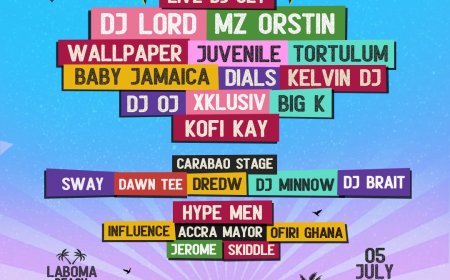Here’s how to start drafting a monthly budget plan
Let’s face it, talking about budgets isn’t the most exciting topic. But if you’re aiming to break free from the salary cycle, tackle debt, or start saving, sticking to a budget could be your ticket to managing your cash flow better and reaching your goals faster. You don’t have to start from scratch, though. There […] The post Here’s how to start drafting a monthly budget plan appeared first on EntertainmentSA News South Africa.

Let’s face it, talking about budgets isn’t the most exciting topic. But if you’re aiming to break free from the salary cycle, tackle debt, or start saving, sticking to a budget could be your ticket to managing your cash flow better and reaching your goals faster.
You don’t have to start from scratch, though. There are plenty of tools out there to help you out like budget calculators, apps, or spreadsheet templates.
Your financial plan is like a roadmap to your short, medium, and long-term financial goals, whether it’s paying off debt, saving for a dream vacation, a new car, or buying a home.
Once you’ve set your goals, budget planning helps you create a tracking system to understand where your money is going. It can help you identify areas where you can cut back on spending or be more intentional, putting your plan into action and turning your goals into reality.

What is a budget template?
A budget template, or budget plan, is a ready-made spreadsheet or document to help you track your expenses and plan for future spending. It typically includes categories for different types of expenses like housing, utilities, food, transport, and entertainment.
It’s an easy way to monitor your finances and see if you’re on track with your spending. Instead of creating a budget from scratch, a template gives you an outline to fill in with your spending amounts. You get to create the ultimate spreadsheet because your template can be customised.
Why you should use a budget template:
- Clearer financial picture: This helps you understand your financial situation better.
- Insight into spending habits: Makes you rethink your spending and focus on your goals.
- Prioritize spending and saving: Helps you identify areas to cut back and increase savings.
- Reduces stress and anxiety: Gives you a sense of control over your finances.
- Improves credit score: Helps you pay bills on time and manage your commitments.
- Aids in decision making: Gives you a clear picture of your income and expenses to make better financial decisions.

Choosing a budget template:
Consider your preferences and needs, looking for a format that works for you. Some templates are more detailed, offering features like debt tracking or savings goals. Choose one that is easy to use, customizable, and compatible with your budgeting style.
Tips for using a budget template:
- Track Your Spending Accurately: Enter all income and expenses for accurate tracking.
- Be Realistic: Underestimate income, overestimate expenses.
- Set Realistic Goals: Make achievable saving and spending limits.
- Review Regularly: Adjust your budget as your life and spending habits change.
- Be Flexible: Your budget is a guide, not a strict rule.
- Use Technology: Budgeting apps or software can simplify tracking and staying on track.
Budgeting is a process that takes time and effort. Stay committed, review regularly, and be willing to adjust your budget as needed. Over time, you’ll see the results of your hard work and commitment.
Main image: Etsy
The post Here’s how to start drafting a monthly budget plan appeared first on EntertainmentSA News South Africa.
What's Your Reaction?






















































